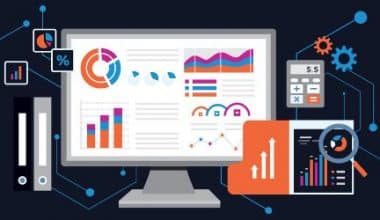A library management system is software that’s designed to manage all the functions of a library. It helps the librarian keep up the database of the latest books and the books borrowed by members together with their due dates. This system completely automates all of your library’s activities.
The simplest way to maintain, organize, and handle countless books systematically is to implement a library management system software. A library management system is employed to keep up library records. It tracks the records of the number of books within the library, what percentage of books are issued, or what number of books are returned or renewed or late fine charges, etc.
You can find books in a moment, issue/reissue books quickly, and manage all the info efficiently and orderly using this technique. A library management system aims to supply instant and accurate data regarding any book, thereby saving lots of time and energy.
What Does a Library Management System Do?
This system utterly automates all of your library’s activities. The simplest way to maintain, organize, and handle multitudinous books consistently is to implement a library management system software package.
A library management system is employed to take care of library records. It tracks the records of the number of books within the library, what percentage of books have been issued, or what percentage of books are returned or renewed or late fine charges, etc.
You can locate books in a second, issue/reissue books quickly, and manage all the information expeditiously and orderly by simply exploiting this technique. A library management system aims to produce instant and correct knowledge relating to any book style, saving tons of time and energy.
What Is a Good Library Management System?
Getting the right library management system depends on several factors, including the type of library, the size of the collection of books, the budget, the worker size, and the system’s compatibility with operating partners. The various factors to be considered when choosing a library management system include;
#1. User Friendly (Patron facing interface)
The objective of a library is to assist the patrons in seeking the correct book. These interfaces with different tools permit patrons to look for what they require. The system should have filtering choices for older users and straightforward-to-use icons for younger users. Patron-facing tools embody the helpful options of reservation of books, displays, and notifications. The browse feature permits the user to look for books of interest by topic, genre, or author.
#2. General Suitability
The library management system software must be one that may manage the complete work of the library. The software ought to be versatile to suit the wants of the library. The system must primarily address the librarian and the other employees’ work. The system must be user-friendly and customizable to every user – the librarian, the recipient or user, the accountant, and different employees. The items, labels, reports, and preferences should be free to select.
#3. Vendor Track Record
The library should check on the vendor and his capabilities before buying. The supplier should demonstrate the merchandise to the users. The seller should install the library management system code on the computers within the library.
#4. User Support and Training
The supplier ought to be able to train the end users to operate the system ably. They need to confirm prompt service for technical hitches that may occur. Coaching for the employees must be provided once the software is updated.
#5. Web Support
There are different types of library software. The system in place ought to be supported by the web. An internet-based mostly library management system is the most ideal because it provides in-depth coverage of books, journals, and reference resources.
#6. Easy Accessibility
The system ought to permit the college libraries to manage their student base from a central system accessible from any place, anytime. It ought to be attainable for management to look at the library operations from any place. The program should be accessible from libraries, classrooms, laptop labs, homes, and anywhere with an online} association or web access.
#7. Cost
The cost of the library management system computer code depends on the options it offers. It is best to list specifically what functions need to be managed to scale back the purchase value.
Why Library Management System Is Important?
#1. Cost Effective
In a library management system, heaps of machine-controlled processes will lower your operative prices—one of the most important prices related to inventory management. Machine-controlled processes like barcodes and RFIDs build it straightforward to keep track of books and different library resources, reducing the requirement for paper-based records. Without the requirement for manual intervention, libraries will become economical and curtail their worker count – saving them both time and cash.
#2. Work Efficiency
The Library Management System improves potency by filling in the gaps during a library’s struggles. The LMS will curtail time spent on administrative tasks, like looking for books, checking in or sorting out books, and handling lost or damaged things. Libraries will do smart rather than hard work and grow their patrons’ satisfaction with wonderful services.
#3. Multi-tasking
A library management system software has been developed to help libraries organize and manage their materials. The most effective LMS permits libraries to modify processes associated with acquisitions, cataloging, circulation, RFID, and more.
#4. Accessibility
The cloud-based library management system provides easy accessibility anytime, anywhere. It eliminates the requirement to be in one location to own access to the library and information kept in it. It is accessible through several devices like desktop computers, laptops, tablets, or smartphones. This makes it attainable for patrons and stores to access their digital collections from any place at any time, which has been established to be very helpful for colleges and public libraries that don’t have enough physical houses to store all the books, and resources needed.
#5. Error Reduction
Library management systems will facilitate libraries with their information management method. It automates several of the tasks that are typically done by a professional. The most necessary half is that it improves knowledge accuracy and optimizes employee-member workflows. With an automatic library management system, one common purpose of access makes it simple for employees to check all data immediately.
#6. Library Security
All of the information that the library puts into the system gets encrypted and is only accessible to users and staff with authentication processes such as login. This helps to protect the information better, preventing information from being lost or stolen.
5 Best Library Management System
#1. CodeAchi Library Management System: An All-In-One Solution for Public, Academic, and School Libraries
The CodeAchi Library Management System (LMS) is one of the most popular systems available today. It is well-known for cramming many functions into a user-friendly, highly visual interface. As a result, it is widely used in public libraries, schools, colleges, and universities worldwide. An OPAC (Online Public Access Catalog) and an automatic report generator are key features.
Aside from that, the software company is regarded for providing excellent customer service. It is also praised for its automatic fine calculation module, which includes automatic SMS borrower notifications via emails and SMS. The software also has a 30-day free trial edition for users to test the functionality and interface. Finally, it supports several systems. As a result, users can link it to other library management programs and databases.
Important Characteristics
- Cataloging features that are simple to use and include essential fields and tags
- Personalize the categories, tags, and other information preserved for library materials.
- Using categories and tags, CodeAchi LMS provides a robust search engine for libraries and users.
- The platform facilitates the issue and return of books and other resources.
- It has a barcode scanner for simple issues and returns operations.
- Allows for rapid data import using CSV or Excel sheets.
- It includes a penalties calculator as well as automated borrower SMS and notifications.
- It includes procurement management capabilities such as acquisition, check-in, and issuing books.
- The platform provides a 360-degree view of circulations and inventory conditions.
- Pricing ranges from $199 to $1,999 for a one-time setup.
- Depending on the license type, annual renewal prices range between $49 and $149.
#2. Libero: A Platform for Every Type of Library
Libero is a well-known cloud-based library management system solution that is very adaptable. It can be customized for various library operations, including public, university, and corporate. It also includes a version for use in particular library management environments, such as museums, galleries, and cultural heritage libraries. The product also includes a mobile version called Libero GO, which may be used as a barcode scanner and manager and a mobile portal.
Libero is regarded as one of the greatest tools and has exceptional customer service. Furthermore, the software vendor is always looking for ways to enhance. Furthermore, because it is cloud-based, users have rapid access to new technology and updates as they become available.
Important Characteristics
- A library services platform (LSP) that is fully accessible through a web browser. It offers features and deployment targeted to academic, public, corporate, and special libraries.
- The native mobile application provides access to management features.
- The mobile application Libero GO can be used for barcode management and scanning.
- Notifies you when a task is completed.
- Through its API, it communicates with other third-party products.
- Provides customers with advanced reporting options for creating custom reports.
- Users have instant access to software upgrades.
- The simple-to-use, highly graphic end-user interface delivers excellent usability right out of the box.
- Pricing
- Libero is deployed according to your specifications. Hence it is only offered through custom quotations. A free trial is also available, allowing you to test the platform firsthand.
#3. Alexandria: The ILS Alexandria dashboard is highly customizable.
Alexandria is a cloud-based integrated library system (ILS) that allows librarians to personalize library experiences. This is due to the interface-building tool, which enables users to add custom fields, buttons, icons, and images. As a result, users can tailor the library experience to appeal to patrons of all ages and reading skills. In addition, the network connects users with eBook providers and provides free resources such as monthly themed posters.
Important Characteristics
- The platform is device independent. As a result, librarians and users can access it from any device.
- Users can use customization options to create library experiences for patrons of different ages and reading levels.
- Provides a practical search feature with adjustable filters and categories.
- Allows for the management of distributed catalogs using a single interface.
- It has a mapping capability that locates any material looked for in the system.
- For publicizing events, Alexandria features a communal Bulletin Board feature.
- Users can construct virtual places to store resources, organize activities, and keep reading lists.
- A slideshow for advertising resources such as seasonal reading, new releases, and classroom materials is available.
- It has an easy-to-use circulation interface for managing all transactions.
- It includes a bespoke reporting module that users can utilize anytime they need.
- Ability to interface auxiliary devices such as scanners, printers, and labels with the software.
- The platform is implemented according to the needs of the clients. As a result, it is only available through quote-based plans. A free demo is available for interested users to test out the software.
#4. WorldShare Management Services: A Cooperative Deployment Solution
WorldShare Management Services (WMS) is a one-of-a-kind cloud-based library management platform that utilizes client and software provider collaboration to design a system that exactly meets their needs. WMS allows subscribers to establish their success criteria, such as design and KPIs and then provides them with customized solutions. The company is also known for allowing clients to learn in a sandbox environment before going live with their unique system.
Important Characteristics
- WMS develops a system tailored to a client’s requirements.
- The company works with libraries regularly to optimize and adjust their platform.
- With custom tags, it provides a robust search tool.
- It gives you access to a massive global interlibrary network.
- WMS has bespoke reports that can be used to provide data-driven actionable insights.
- Allows for creating a sandbox carbon copy environment for training before live deployment.
- Digby, a mobile application for library management and inventory control, provides access to the platform.
- WMS can be integrated with third-party apps.
- Known for offering outstanding customer service and training
- WMS offers personalized pricing.
#5. Infiniti Management Software: School Library Management Platform
Infiniti Library Software is a library management software package that can be customized for use in schools. As such, it includes features that foster a love of reading and essential independent learning skills. Teachers and librarians can develop curated content for parents and students to promote library items and individualized learning using the LibPaths portal hub. It also makes library resources available to users no matter where they are—at home, in the library, or on the go.
Through automation, the cloud-based software also assists librarians with manual, time-consuming activities. Among these are automatic notifications for overdue items.
Important Characteristics
- Allows users to do intuitive library searches.
- It provides tools for personalized cataloging as well as effective circulation management.
- Overdue materials can be automatically notified via email using the platform.
- It enables customized, thorough reporting of KPIs.
- Provides complete customization, from workflows to branding.
- The solution includes AWS data encryption.
- Backups data automatically every day
- The Infiniti Management Software team handles all migration procedures to ensure a smooth transition.
- Integrates with LibPaths, a virtual learning hub built on the cloud.
- The platform is deployed specifically for a library. As a result, it is offered through custom quotes.
What Are the Components of a Library?
There are loads of elements to a library in many alternative areas. The logistics of most kinds of libraries, to create a library run and be an area that’s helpful to the community of users, are run by many departments:
- Technical Services: they create information sources ascertainable through catalogs and databases.
- Reference Services: They answer queries and facilitate users to realize what they have to assist users in realizing the proper information.
- Outreach: Not all libraries have this department, and infrequently this space is lumped into reference. This department spends its time making programming and developing relationships with departments and/or the community to form programming that’s useful and helpful to the users. Primarily, they’re those that work out what users need from their library and work to create those needs and desires happen.
- Circulation: This department primarily tracks the data sources being lent and returned to users. They usually return print items to the shelves and keep track of the statistics of what resources library users are victimization the foremost. This helps verify what materials ought to be weeded out, what materials ought to be ordered, and figures out if materials are missing or lost, in conjunction with several different responsibilities.
- Acquisitions: This department generally is liable for getting information sources. If a reference librarian desires a book ordered, the acquisitions department work to seek out the item at rock bottom. Acquisitions are usually working closely with the technical services department.
Conclusion
A library management system (LMS) allows librarians to trace the standing of books, subscriptions, and user information. From managing the acquisition and cataloging to serial management, issued/borrowed books, returned books & maturity date calculation, it helps manage the daily work process within the library.
The library management system is an ERP software for managing the library and tracking all the books borrowed with due dates, fees, etc. this technique fully automates all of your library’s activities. The LMS must be user-friendly, easily accessible, generally suitable, and cost-effective.
Related Articles
- Workforce Management System: Types, Features, And Benefits
- Point Of Sale Systems: Best POS System For Businesses
- PRACTICE MANAGEMENT SYSTEMS: Best 2023 Practices
- TIME MANAGEMENT SYSTEMS: Best Time Management Systems
- Transaction Processing System: How it Works With Examples (Detailed Guide)






